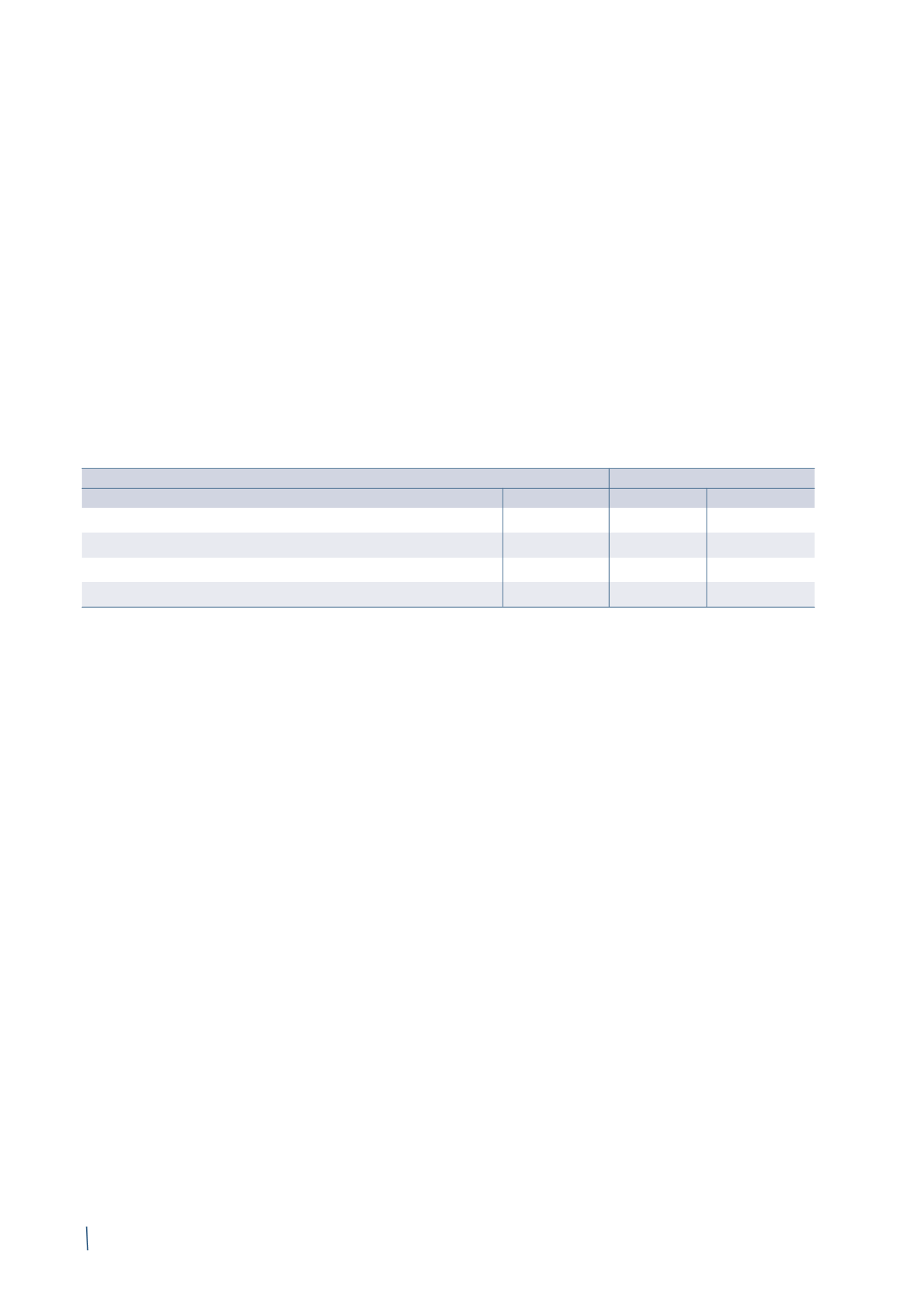

Consolidated Financial Report |
EXPLANATORY NOTES
2014 Annual Report
Prysmian Group
164
[c] Price risk
The Group is exposed to price risk in relation to purchases and
sales of strategic materials, whose purchase price is subject to
market volatility. The main raw materials used by the Group
in its own production processes consist of strategic metals
such as copper, aluminium and lead. The cost of purchasing
such strategic materials accounted for approximately 51.2%
of the Group’s total cost of materials in 2014 (56.3% in 2013),
forming part of its overall production costs.
In order to manage the price risk on future trade transactions,
the Group negotiates derivative contracts on strategic metals,
setting the price for projected future purchases.
Although the ultimate aim of the Group is to hedge risks to
which it is exposed, these contracts do not qualify as hedging
instruments for accounting purposes.
The derivative contracts entered into by the Group are ne-
gotiated with major financial counterparties on the basis of
strategic metal prices quoted on the London Metal Exchange
(“LME”), the New York market (“COMEX”) and the Shanghai
Futures Exchange (“SFE”).
The following sensitivity analysis shows the effect on net
profit and consolidated equity of a 10% increase/decrease in
strategic material prices versus prices at 31 December 2014
and 31 December 2013, assuming that all other variables
remain equal.
2014
2013 (*)
-10%
+10%
-10%
+10%
LME
(12.63)
12.63
(13.85)
13.85
COMEX
0.21
(0.21)
(0.78)
0.78
SFE
(5.42)
5.42
(4.88)
4.88
Total
(17.84)
17.84
(19.51)
19.51
(*) The previously published prior year consolidated financial statements have been restated following the adoption of IFRS 10 and IFRS 11. Further details can
be found in Section C. Restatement of comparative figures.
The potential impact shown above is solely attributable to
increases and decreases in the fair value of derivatives on
strategic material prices which are directly attributable to
changes in the prices themselves. It does not refer to the
impact on the income statement of the purchase cost of
strategic materials.
[d] Credit risk
Credit risk is connected with trade receivables, cash and cash
equivalents, financial instruments, and deposits with banks
and other financial institutions.
Customer-related credit risk is managed by the individual
subsidiaries and monitored centrally by the Group Finance
Department. The Group does not have significant concen-
trations of credit risk. It nonetheless has procedures aimed
at ensuring that sales of products and services are made to
reliable customers, taking account of their financial position,
track record and other factors. Credit limits for major
customers are based on internal and external assessments
within ceilings approved by local country management. The
utilisation of credit limits is periodically monitored at local
level.
During 2014 the Group had a global insurance policy in place
to provide coverage for part of its trade receivables against
any losses.
As for credit risk relating to the management of financial and
cash resources, this risk ismonitored by the Group Finance De-
partment, which implements procedures intended to ensure
that Group companies deal with independent, high standing,
reliable counterparties. In fact, at 31 December 2014 (like at
31 December 2013) almost all the Group’s financial and cash
resources were held with investment grade counterparties.
Credit limits relating to the principal financial counterparties
are based on internal and external assessments, within
ceilings defined by the Group Finance Department.
(in millions of Euro)



















